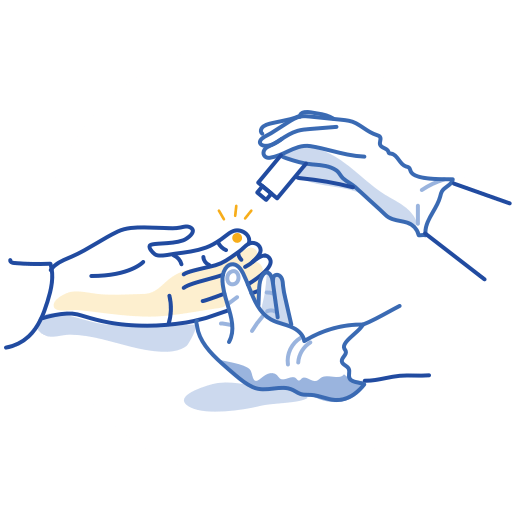Blood donation process
- During your donation
During your donation
The whole blood donation process takes 45 minutes to an hour, from registration to rest and recovery. Find out what to expect when you visit the Bloodbank and follow these tips for a pleasant donation.
When you go to the Bloodbank, please ensure the following:
-Bring your official photo identification, such as an NRIC, work pass or passport.
-Your parent/guardian has completed the online consent form if you are below 18.
-If you are taking any medication, bring a list and show it to our medical staff.
You will also need:
A local address where you are contactable.
A local telephone number where you can be reached.
Note:
- If you are a foreign donor without a fixed local address, you need a Singapore citizen or permanent resident who is willing to act as your guarantor by providing their local address. You will have to fill in the Guarantor’s Undertaking Form A and your guarantor will need to complete the Guarantor’s Undertaking Form B
- Blood donors who are Singapore citizens and permanent residents living overseas must use their updated SingPass and provide an email address and local contact number when donating.
1. Register

Bring your identification to the check-in counter, where we will record your personal particulars. You will also need to fill out a confidential health assessment questionnaire, before getting a place in the donation queue.
2. Check your blood haemoglobin level

A staff will check and record your weight. To take a tiny amount of blood from your finger to check your haemoglobin levels. This involves only a pin-prick.
To donate blood, you will need a minimum haemoglobin level of 13.0 g/dl for males and 12.5 g/dl for females.
3. Get screened

A medical screening professional will ask about your medical, travel and social history, and take your blood pressure, pulse and temperature. This is to confirm whether blood donation is safe for both you and the recipient.
4. Donate blood

Your arm will be cleaned and a local anaesthetic will be used before the needle is inserted. The actual donation takes only 5 to 10 minutes for 350 to 450 ml of blood, or up to 45 minutes for apheresis donations (platelets, red cells or plasma). Just
sit back and relax during the process. You will get a bandage over the spot once it is over.
5. Rest and recover

Have a seat, and enjoy the snacks and drinks available for you. You are advised to rest for at least 10 minutes.
You can leave when you feel okay. The fluid (plasma) portion of your donated blood will be replaced in a few days.
What happens to your donated blood
Your blood will be screened for blood group, infectious diseases and antibodies. It is also separated into three components: red blood cells, platelets and plasma. It is then stored under carefully monitored and controlled conditions to keep it in an optimal state for transfusion.
Watch this video or read this infographic to learn what happens in the laboratory after blood donation.